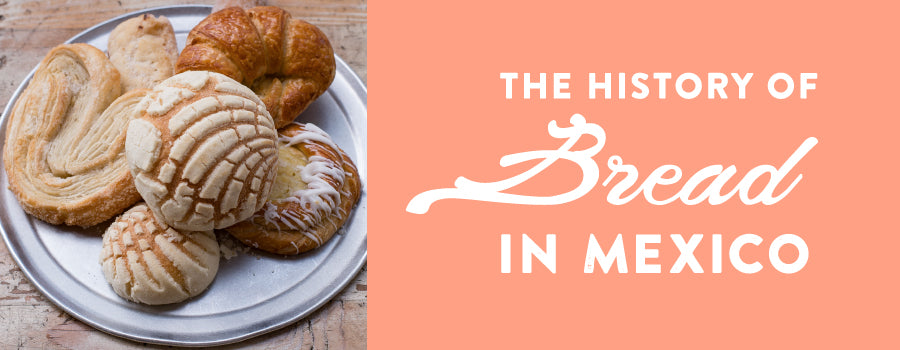THE HISTORY OF BREAD & PAN DULCE IN MEXICO

One of the first non-native foods introduced into New Spain was wheat, a Spanish staple and religious necessity, the only grain recognized by the Catholic Church as being suitable for the Eucharist wafer. In Mexico, eating sweet pastries for breakfast or late supper – known as la merienda – is a tradition that dates back to the 16th century. It was an inventive viceroy who started a practice, which would change the way native people viewed bread. He dipped it in chocolate as he ate it, a custom that quickly caught on, and created a desire for something more delicious than simple white bread. This desire was amply fulfilled thanks to the French influence that took hold of Mexico at the end of the Viceroyalty.

The art of making pastry became popular in Mexico during the brief French occupation of the 19th Century. The country was inundated with French bakeries and Mexicans soon developed a taste for crispy baguettes and rich pastries. The French were defeated in 1862, but left behind a legacy of taste for delicious baked goods, making the Mexican baking tradition one of the most inventive in the world. The French influence in Mexico peaked in the early 1900s during the dictatorship of Porfirio Díaz, a great admirer of everything with French origins. Diaz sought to modernize and refine his country by replacing traditional local dishes with French cuisine.
As a result, bakeries sprouted up throughout Mexico and skilled Mexican bakers began to adopt techniques and doughs from the French tradition of baking such as puff pastry and meringue. New pastries were created in whimsical shapes and in a variety of doughs and textures, bearing colorful names often relating to their shape. For instance, one can find marranitos (piglets), conchas (seashells), moños (bows), or bigotes (moustaches). Even traditional French pastries adopted Mexican names, such as orejas (palmiers) and cuernitos (croissants).

It is difficult to resist the enticing aroma of freshly baked bolillos (French rolls) and pan dulce (sweet bread). Traditional Mexican bakeries use a modified form of self-service. Customers grab a pair of tongs and a tray and step up to the cases filled with bread. They pick them up with the tongs and set them on the tray. After they chose their bread, they take the tray to the counter where the clerk will wrap and ring up their purchases. Mexican pastries are best enjoyed with family or friends. Preservatives and artificial ingredients are not used in traditional Mexican baked goods so the products should be eaten within two days. It's estimated that there are between 500 and 2,000 types of breads and pastries produced in Mexico.


